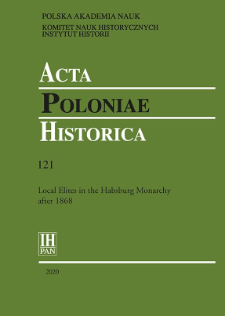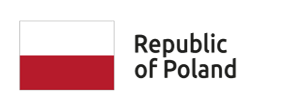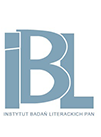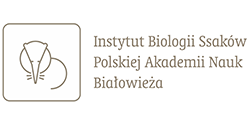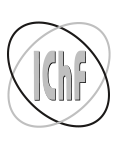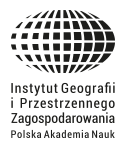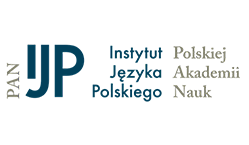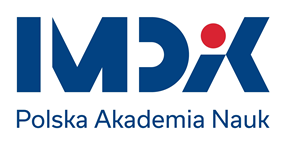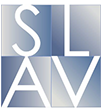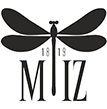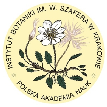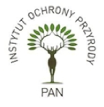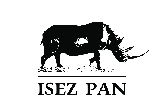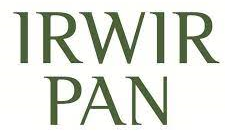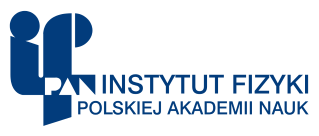- Search in all Repository
- Literature and maps
- Archeology
- Mills database
- Natural sciences
Advanced search
Advanced search
Advanced search
Advanced search
Advanced search

Object
Title: A Dirty War: The Armed Polish-Lithuanian Conflict and its Impact on Nation-Making in Lithuania, 1919–23
Subtitle:
Acta Poloniae Historica T. 121 (2020) ; Studies
Institutional creator:
Polska Akademia Nauk. Komitet Nauk Historycznych
;
Polska Akademia Nauk. Instytut Historii im. Tadeusza Manteuffla
![]()
Contributor:
Polska Akademia Nauk. Komitet Nauk Historycznych ; Polska Akademia Nauk. Instytut Historii im. Tadeusza Manteuffla
Publisher:
Place of publishing:
Description:
Type of object:
Abstract:
This article discusses the armed Polish-Lithuanian conflict during 1919–23. It flared in May 1919 when the first open clash between Lithuanian and Polish troops took place. It gradually escalated into an undeclared war and lasted until late November 1920 when, in Kaunas, both sides agreed to stop fighting along the neutral zone established by the League of Nations. However, there was no final peace agreement signed, only a truce, and low-scale paramilitary violence continued unabated in the neutral zone until as late as May 1923. The author argues that the conflict involved various paramilitary formations which terrorised the civilians in the disputed borderland. For the Lithuanian government, the war against Poland provided an opportunity for total mobilization of the Lithuanian society. The fact that, during the entire interwar period, the conflict remained open-ended, ensured that the paramilitary structures and military laws that emerged during it would remain in place for much longer.
References:
Biržiška Mykolas, Vilniaus golgota (Vilnius, 1992)
Buchowski Krzysztof, Litwomani i polonizatorzy: mity, wzajemne postrzeganie i stereotypy w stosunkach polsko-litewskich w pierwszej połowie XX wieku (Białystok, 2006)
Gimžauskas Edmundas (ed.), Lietuvos ir Lenkijos santykiai: nuo Pirmojo pasaulinio karo pabaigos iki L. Želigovskio įvykdyto Vilniaus užėmimo (Vilnius, 2012)
Kalyvas Stathis, The Logic of Violence in Civil War (Cambridge, 2006)
Laurinavičius Česlovas et al. (eds), Lietuvos istorija: nepriklausomybė, 1918–1940, x, Part 1 (Vilnius, 2013)
Lesčius Vytautas, Lietuvos kariuomenė nepriklausomybės kovose, 1918–1920 (Vilnius, 2004)
Łossowski Piotr, ‘Ostatni akt kształtowania granic Drugiej Rzeczypospolitej – podział pasa neutralnego pomiędzy Polską a Litwą w lutym 1923 r.’, Studia z Dziejów Rosji i Europy Środkowo-Wschodniej, 37 (2002), 27–39
Łossowski Piotr, Konflikt polsko-litewski, 1918–1920 (Warszawa, 1996)
Łukomski Grzegorz, Wojna domowa. Z dziejów konfliktu polsko-litewskiego. 1918–1920 (Warszawa, 1997)
Rezmer Waldemar, ‘Likwidacja pasa neutralnego pomiędzy Polską a Litwą w lutym 1923 r.’, Dzieje Najnowsze, xxxviii, 4 (2006), 31–52
Relation:
Acta Poloniae Historica ; Acta Poloniae Historica
Volume:
Start page:
End page:
Detailed Resource Type:
Format:
Resource Identifier:
oai:rcin.org.pl:138264 ; 0001-6829 ; 2450-8462 ; 10.12775/APH.2020.121.11
Source:
IH PAN, sygn. A.295/121 Podr. ; IH PAN, sygn. A.296/121 ; click here to follow the link
Language:
Rights:
Creative Commons Attribution BY-ND 4.0 license
Terms of use:
Copyright-protected material. [CC BY-ND 4.0] May be used within the scope specified in Creative Commons Attribution BY-ND 4.0 license, full text available at: ; -
Digitizing institution:
Institute of History of the Polish Academy of Sciences
Original in:
Library of the Institute of History PAS
Projects co-financed by:
National Programme for the Development of the Humanities
Access:
Object collections:
- Digital Repository of Scientific Institutes > Partners' collections > Institute of History PAS > Serials
- Digital Repository of Scientific Institutes > Partners' collections > Institute of History PAS > Institute Publications
- Digital Repository of Scientific Institutes > Partners' collections > Institute of History PAS > Institute Publications > Journals
- Digital Repository of Scientific Institutes > Partners' collections > Institute of History PAS > Institute Publications > Journals > Acta Poloniae Historica
- Digital Repository of Scientific Institutes > Literature > Journals/Articles
Last modified:
Feb 5, 2025
In our library since:
Sep 8, 2020
Number of object content downloads / hits:
147
All available object's versions:
https://rcin.org.pl./publication/173103
Show description in RDF format:
Show description in RDFa format:
Show description in OAI-PMH format:
| Edition name | Date |
|---|---|
| Balkelis, Tomas, A Dirty War: The Armed Polish-Lithuanian Conflict and its Impact on Nation-Making in Lithuania, 1919–23 | Feb 5, 2025 |
Objects Similar
Czechowski, Janusz (1956– )
Malužinas, Martinas
Jaworski, Paweł
Łossowski, Piotr (1925– )
Turek, Wojciech (1963– )
Pankiewicz, Ewa (1951– )
Faszcza, Dariusz (1960– ) Faszcza, Kamila
Żukowski, Przemysław Marcin (1978– )

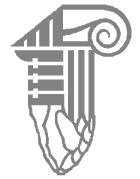 INSTYTUT ARCHEOLOGII I ETNOLOGII POLSKIEJ AKADEMII NAUK
INSTYTUT ARCHEOLOGII I ETNOLOGII POLSKIEJ AKADEMII NAUK
 INSTYTUT BADAŃ LITERACKICH POLSKIEJ AKADEMII NAUK
INSTYTUT BADAŃ LITERACKICH POLSKIEJ AKADEMII NAUK
 INSTYTUT BADAWCZY LEŚNICTWA
INSTYTUT BADAWCZY LEŚNICTWA
 INSTYTUT BIOLOGII DOŚWIADCZALNEJ IM. MARCELEGO NENCKIEGO POLSKIEJ AKADEMII NAUK
INSTYTUT BIOLOGII DOŚWIADCZALNEJ IM. MARCELEGO NENCKIEGO POLSKIEJ AKADEMII NAUK
 INSTYTUT BIOLOGII SSAKÓW POLSKIEJ AKADEMII NAUK
INSTYTUT BIOLOGII SSAKÓW POLSKIEJ AKADEMII NAUK
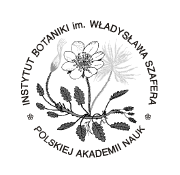 INSTYTUT CHEMII FIZYCZNEJ PAN
INSTYTUT CHEMII FIZYCZNEJ PAN
 INSTYTUT CHEMII ORGANICZNEJ PAN
INSTYTUT CHEMII ORGANICZNEJ PAN
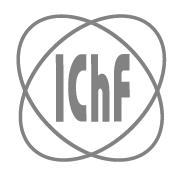 INSTYTUT FILOZOFII I SOCJOLOGII PAN
INSTYTUT FILOZOFII I SOCJOLOGII PAN
 INSTYTUT GEOGRAFII I PRZESTRZENNEGO ZAGOSPODAROWANIA PAN
INSTYTUT GEOGRAFII I PRZESTRZENNEGO ZAGOSPODAROWANIA PAN
 INSTYTUT HISTORII im. TADEUSZA MANTEUFFLA POLSKIEJ AKADEMII NAUK
INSTYTUT HISTORII im. TADEUSZA MANTEUFFLA POLSKIEJ AKADEMII NAUK
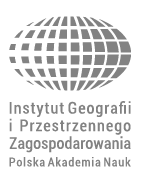 INSTYTUT JĘZYKA POLSKIEGO POLSKIEJ AKADEMII NAUK
INSTYTUT JĘZYKA POLSKIEGO POLSKIEJ AKADEMII NAUK
 INSTYTUT MATEMATYCZNY PAN
INSTYTUT MATEMATYCZNY PAN
 INSTYTUT MEDYCYNY DOŚWIADCZALNEJ I KLINICZNEJ IM.MIROSŁAWA MOSSAKOWSKIEGO POLSKIEJ AKADEMII NAUK
INSTYTUT MEDYCYNY DOŚWIADCZALNEJ I KLINICZNEJ IM.MIROSŁAWA MOSSAKOWSKIEGO POLSKIEJ AKADEMII NAUK
 INSTYTUT PODSTAWOWYCH PROBLEMÓW TECHNIKI PAN
INSTYTUT PODSTAWOWYCH PROBLEMÓW TECHNIKI PAN
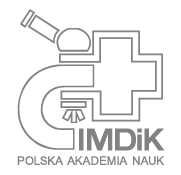 INSTYTUT SLAWISTYKI PAN
INSTYTUT SLAWISTYKI PAN
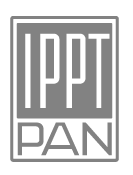 SIEĆ BADAWCZA ŁUKASIEWICZ - INSTYTUT TECHNOLOGII MATERIAŁÓW ELEKTRONICZNYCH
SIEĆ BADAWCZA ŁUKASIEWICZ - INSTYTUT TECHNOLOGII MATERIAŁÓW ELEKTRONICZNYCH
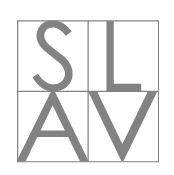 MUZEUM I INSTYTUT ZOOLOGII POLSKIEJ AKADEMII NAUK
MUZEUM I INSTYTUT ZOOLOGII POLSKIEJ AKADEMII NAUK
 INSTYTUT BADAŃ SYSTEMOWYCH PAN
INSTYTUT BADAŃ SYSTEMOWYCH PAN
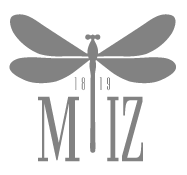 INSTYTUT BOTANIKI IM. WŁADYSŁAWA SZAFERA POLSKIEJ AKADEMII NAUK
INSTYTUT BOTANIKI IM. WŁADYSŁAWA SZAFERA POLSKIEJ AKADEMII NAUK
